- info@sintaductrodder.com
- +86 158 3195 8550

If you are doing the work to feed the electric wire, when you feed the wires into conduits, you need to push all wires smoothly from their spools. Meanwhile, make the wires unrolled when you are feeding them. Make the wire smooth by lubricate and push them into the tube, the other hand pull wires off of spools.
Fish tape always in the length of 50' to 100', when using it, press a button, then all tapes off the box. When the tapes appears at the other end of the conduit, another person is needed to attach wires to the fish tape end. Then you can pull the wires through the conduit.
If the worker who pulling the wire at the other end, please pull wires by 2 to 3 ft intervals.

When electrical wires or cables need to be replaced or installed, the method you can use is to pull it through an electric conduit. But it is not as simple as pushing cables. You need techniques and tools to finish this job.
The tools are: fish tape, wire stripper, wire puller and wire lubricant.
According to the conduit's length, hardness, curves and corners, you can choose three-four method to pulling the wires.
Measure your conduit from end to end to know its length. If the conduit length is longer than your fish tape, and if you can use the existing wire or cable as your pulling string, you will almost no other choice, can only use this method to strap wire through catheter.
To use the existing wire, make sure that this line is free and unconnected at the end of your nearest catheter. Connect your cable to the distal end of the catheter. If the pull wire is connected to something, it needs to be released. Make a small loop so that it can be fit into the conduit easily, then by wrapping the free end around the wire beam with tape, the ring is fixed.
Pass the end of the wire or cable through the ring that you make in the wire. A ring of the same size as a drawing wire is made in the feed cable. Use tape to fix the end, like you pull wire. Place your wire box so that it is free to leave the box and freely enter the conduit. Go to the other end of the conduit and pull the wire until the new wire comes out from the end of the conduit.
If your cable binds up, it will need wire lubricant to make the cable surface smooth and ask for helper. Go to the other end of the conduit and pull back your cable until the loops appear. You add lubricant when he is pulling. Your helper have to use a cable puller when the cable is smooth and hard to hold.
If the pulling wire breaks when it is being pulled in the conduit, and if your fish tape is longer than the conduit, then you can insert your fish tape into conduit and push it until it comes out at the conduit end. Connect your cable to the fish tape, go to the other end of the conduit and pull your fish tape through the conduit.

How to pull wires through electric conduit
When pulling fish tape in conduit, you may encounter some inevitable trouble: 90 degree turns or previous old cables, these troubles lead difficulties to push fish tapes through whole length conduit. Your fish tape may be stuck at second 90 degree turns, or may be stuck by the previous installed cable.
To pull fish tape through entire conduit smoothly, you need to fish conduit from both ends by using 50 ft or 100 ft long fish tape.
Step 1: Use first fish tape, to expose one end of the fish tape. Make a few rings with 12 ropes. Then bundle coils and wrapped around the end of the fish tape.
Step 2: Take second fish tape and open it, then make a hook at the end of it. The fish tape should can bend freely.
Step 3: Ask two workers to stand at two ends of conduit. One takes hooked end fish tape, the other take the looped end fish tape, then begin pushing them from two ends of the conduit. The aim is to catch one of loops.
Step 4: Spin the hooked end to make it easier to grab one of the loops. Once finished, pulling one end of the fish tape, then the other end is pulling through the conduit. When second fish tape appears, it is good. Now, you can connect the wire to the fish tape that has passed through the whole conduit to finish the drawing operation.
Conduit acts the function of safe and secure barrier between wires and weather conditions or dirt.
Flexible conduit is a protective pipe that allows wire to bypass the obstacles in or above the ground. Besides protecting wires, flexible conduit hides the wire in the home to prevent tripping danger and entanglement. It is applicable to galvanized steel or plastic, all of them are long lasting and durable, any one is a best choice. There are several method for pulling fish tape through flexible conduit.
Step 1 - Tie the string to a long and nonflexible rod
Step 2 - Push the string and rod through the conduit until the rod appears at the other end of the conduit.
Step 3 - Tie electric wire on the string.
Step 4 - Pull the rod back to the conduit and take the wire. This method is suitable for shorter ducts.
Step 1 - Use a rope or fishing line to tie a thin, heavy fishing weight at the end of the wire. Let the fishing weight have 2 to 3 inches of wire in front of the wire.
Step 2 - Place the fishing weight into the conduit.
Step 3 - Raise the conduit end higher than the weight, to make gravity push the weight and wires through the conduit. Continue to lift the conduit, make the weight slide until all wires are passby. this is suitable for vertical conduit run.
Step 1 - A fish tape is a thin but strong wire which is hidden in plastic box. It works like a snake to pass through a conduit. Usually, the box can be bent to supply or involve in the tape. At beginning, push fish tape through the flexible conduit until it comes out at the other end of the conduit.
Step 2 - Insert the wire into the ring at the end of the fish tape and firmly screw the wire on the ring.
Step 3 - Push the fish tape slowly and steadily when pushing the wire pass through the conduit.
Step 4 - Continue to push the fish tape until the end connect to the wires which is existing in the conduit.
When a single cable is introduced into the outlet box through a short cutting pipe, the installation workers sometimes feel depressed, because the cable can be easily stuck to the joint fixed on the pipe piece. This problem appears, because the cable cut end is mostly flat and is bond up to the conduit joint.
Solution- Bending the cable end to make it into a rounded end, it can reduce or even eliminate this problem.
♦ Bend the cable from its end 3 to 5 inches so that it become into a loop.
♦ If needed, twist the cable end st twice and connect it.
♦ Make the loop is small enough to allow it fit into the conduit.
♦ Slide the cable into the tube and push it to the outlet box.
♦ If the cable meets the pipe connector, just turn the cable. It should easily slip through the joints.
♦ Once the cable reaches the box, pull it out, cut and terminated.
♦ Before starting the project, please decide whether to supply the power for the new socket, or switch from the existing socket or directly from the circuit breaker panel. In either way, check carefully whether adding a new device will overload the circuit.
♦ Draw your wiring path. The easiest way is to connect the cable to the attic above the new outlet or switch or the basement or the crawl space below.
♦ If pipeline system or piping system is not installed behind the wall, another solution is to use the raceway to hide the conductor, and the raceway will extend along the wall surface, and it can be painted to integrate with your decoration.
♦ Cut off the power of the circuit breaker panel to a socket or circuit breaker that you will get electricity from. Use a voltage tester to confirm that a power outlet or circuit breaker is in a closed state.
Turn off the power supply on the circuit breaker panel to the outlet that you will be able to absorb from the electric power.
Use a voltage tester to check whether the power supply on the power outlet is disconnected.
A stud detector is used to ensure that the position of the new equipment is not adjacent to the stud.
Fix the electric box on the wall to be installed.
Use a pencil to track the box around the box to mark the area to be cut. Use a level to ensure that the contour is straight.
If you pass the cable through the ceiling, use the 1/8 inch drill to drill through the ceiling above the new wall box and drill a hole carefully. If you run the cable through the basement or the crawl space, you can drill down the floor or the floor next to the board.
Insert hard metal wire or straighten coat hanger into the hole.
In your attic or basement, look for a 2 x 4 inch beam adjacent to a prominent hard line. In the attic, the beam is the top of the wall and is called the roof. In the basement, it is the bottom of the wall and is known as floor.
Drill a 1.5 inch starter hole on an angle of the the electric box.
Start from the hole and cut along the outline with a dry wall saw. If the edge of the opening is rough, it is possible. You can hide the opening with a wallboard.
If you plan go through attic, use a shovel drill to drill a hole on the top of the top of the new electric box. If you want to crawl through the basement space or running cable, please drill a hole in the bottom of the box below.
Put the fish tape into the opening of the wall and push it into the hole on the roof. If you pass the cable through the basement or the crawl space, push it down to the hole on the floor. You may need to insert the end of the hanger into the hole to pull the end of the fish belt through the hole.
From a attic, a basement or a crawl space, an electrical tape is used to fix one end of the cable on a hook on a fish belt.
From the beginning of the wall conduit, pull the fish tape slowly and carefully, pull the cable until it reach to the wall opening. Do not produce friction that may tear the cable sheath and carefully avoid the possible damage to the twisted cable.
 Duct Rodder
Duct rodder, it is an excellent cable pulling tool. Smooth and resilient surface allows the piercer easily pass through the narrow pipeline. Commonly used in telecommunication pipeline cleaning.
Duct Rodder
Duct rodder, it is an excellent cable pulling tool. Smooth and resilient surface allows the piercer easily pass through the narrow pipeline. Commonly used in telecommunication pipeline cleaning.
 Fiberglass Duct Rodder
Fiberglass duct rodder, It is an auxiliary tool for cable laying in pipelines, and can collect cables conveniently. It is ideal for electrical wire pulling works.
Fiberglass Duct Rodder
Fiberglass duct rodder, It is an auxiliary tool for cable laying in pipelines, and can collect cables conveniently. It is ideal for electrical wire pulling works.
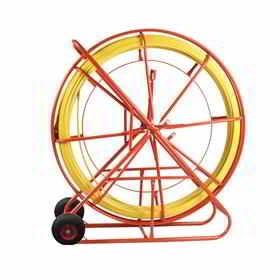 Cobra duct rod
Cobra duct rod is also named cobra conduit rod. It is widely used in various kinds of electric cable pulling pipe line project
Cobra duct rod
Cobra duct rod is also named cobra conduit rod. It is widely used in various kinds of electric cable pulling pipe line project
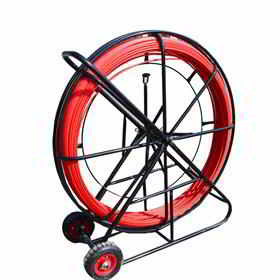 Traceable duct rodder
Traceable duct rodder is a unique type duct rodder with cooper wire inside, which can allow users follow and find the duct rod's route easily.
Traceable duct rodder
Traceable duct rodder is a unique type duct rodder with cooper wire inside, which can allow users follow and find the duct rod's route easily.
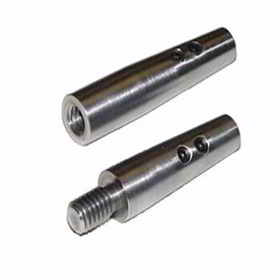 Duct Rodder Accessories
Duct rodder repairt kit of duct rodder includes 5 pcs accessories, drawing head, rod grapple, flexible leader, roller guide, and swivel coupling. The accessories make the cable running easy and simple.
Duct Rodder Accessories
Duct rodder repairt kit of duct rodder includes 5 pcs accessories, drawing head, rod grapple, flexible leader, roller guide, and swivel coupling. The accessories make the cable running easy and simple.
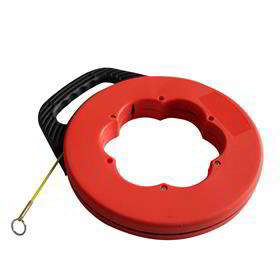 Fish Tape
Fish tape is an ideal tool widely used by an electrician to route through electrical conduit or walls for wires pulling.
Fish Tape
Fish tape is an ideal tool widely used by an electrician to route through electrical conduit or walls for wires pulling.
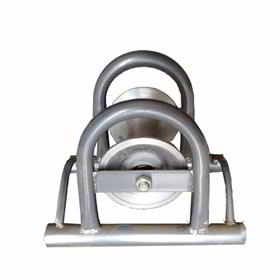 Cable Rollers
Cable rollers are widely used to protect cable from damaged in the field of construction during the cable-laying.
Cable Rollers
Cable rollers are widely used to protect cable from damaged in the field of construction during the cable-laying.
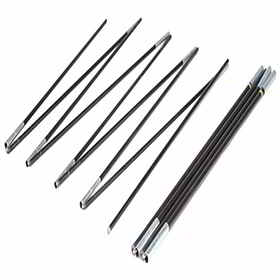 Push Pull Rod
Fiberglass push pull rod is a tooll used for pushing or pulling the wire, cable easily through pipeline or crawl spaces etc. It is widely used in construction, residential electrical and commercial industries. It is excellent for hard to reach places
Push Pull Rod
Fiberglass push pull rod is a tooll used for pushing or pulling the wire, cable easily through pipeline or crawl spaces etc. It is widely used in construction, residential electrical and commercial industries. It is excellent for hard to reach places
Main Products
Tell Me What by wechat
